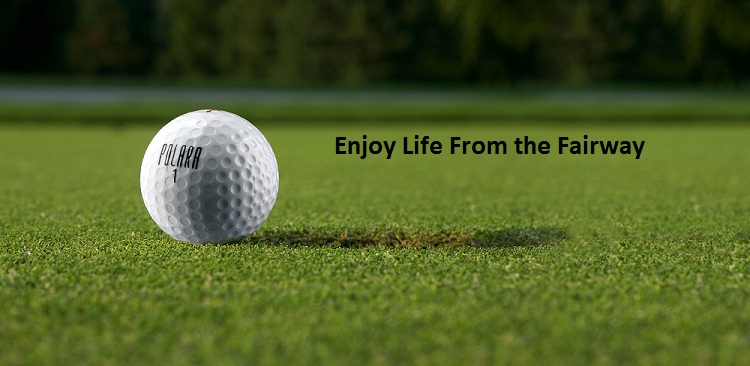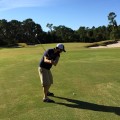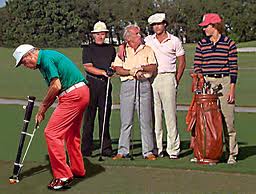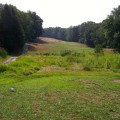
I was reluctant. Even if you offered to pay me, I wouldn’t test out Polara Golf’s driver or golf balls. I had my standards and what I felt was outright cheating crossed the line.
Polara Golf doesn’t just sell illegal equipment (nonconforming drivers and balls that take away your hook or slice), but the company (at least in my mind at the time) was also sending the wrong message: That you have to cheat to enjoy golf. After all, the GolfStinks ethos is to enjoy golf in spite of your score. It doesn’t matter if you stink; what matters is you’re outdoors with good friends, playing the game you love.
So how is it that as I type this, I can’t wait to receive my box of Polara Golf balls in the mail? How is it that I am really excited to get out on the course and play a round with them?
Simply put:
“Because golf is more fun from the fairway.” – Dave Felker (CEO, Polara Golf)
I spoke with Mr. Felker for nearly an hour last week. Though my stance toward Polara had softened a bit leading up to our chat, I was still reluctant to actually use the equipment myself. But, I was willing to hear him out.
Mr. Felker, (who by the way has a PhD in engineering and was formerly the vice president of research and development for the company who makes Top Flite golf balls), argued some good points in favor of the average golfer using nonconforming equipment:
1. It’s not cheating if everyone knows.
I questioned Mr. Felker on that fine line between bending the rules and breaking them. For example, taking a Mulligan or awarding a gimme putt might be acceptable for most recreational golfers, but playing with illegal clubs and balls crosses the line for many. His response kicked it up a notch: He countered that the real cheater is the golfer who drops a ball to pretend he found his errant drive, or knowingly puts down 4 instead of 5 on his scorecard. However, playing with non-sanctioned equipment is only cheating if you don’t inform your playing partners ahead of time.
In fact, when Mr. Felker shows up at a tournament, he will tell them he has two handicaps: the first is when he plays with USGA-sanctioned equipment and the second is when he plays with Polara equipment. He then asks tournament organizers to decide which handicap they would like him to use – and they will most often choose the lower one (thus allowing him to use his nonconforming equipment).
2. The USGA rulebook isn’t for recreational golfers.
I mentioned in a post recently that there needed to be a simplified rulebook for casual golfers. Mr. Felker agrees and suggests that one of the rules in that simplified book allows for use of nonconforming equipment. He points to the USRGA rulebook (the United States Recreational Golf Association). The rulebook, co-written by Mr. Felker, is specifically for recreation play.
What Mr. Felker has done by creating the USRGA rulebook is provide justification for average golfers to use nonconforming equipment. Whereas the USGA rules are fine for specific tournament play (including the pro tours) and also from the standpoint of helping to identify the best golfers in the world, the USRGA rules are instead geared for the rest of us.
He told me a story where he was speaking about his products to several golfers at a trade show. Everyone was eager to try the Polara balls until one member of the audience asked if they conformed to the USGA rules. When he answered “no” the crowd’s anticipation turned to disappointment…Until, that is, Mr. Felker said: “But they do conform to the United States Recreational Golf Associations’ guidelines.” At which point the audience’s excitement returned. “People are looking for permission to use this equipment,” he told me.
3. It’s like training wheels for kids.
One thing that didn’t sit well with me was what type of message Polara sends to kids? Are we willing to teach golf newbies that the game is so hard, we have to cheat to enjoy it? But Mr. Felker provided a familiar analogy to address this issue: He likened someone learning golf using a Polara ball to someone learning how to ride a bike with training wheels – it highlights how much fun it could be instead of how difficult it can be.
In this regard, more children exposed to the activity will keep at it. And once they appreciate golf (while learning the proper grip, swing, etc.), you can take the “training wheels” off so that these kids can get a sense of where they stand in terms of competition (and then as they get older, let them decide on their own if they want to go back to nonconforming equipment).
4. Golf is more fun from the fairway.
Perhaps the most influential comment Mr. Felker made to me was that golf is simply more fun from the fairway. When I thought about that, this whole nonconforming equipment thing started to make sense – after all, how much more fun would it be if we average hacks weren’t always hitting out of the rough or out of the trees? How much more energy would we have over the last few holes? How much more time would there be to converse with our buddies (because we wouldn’t all be off in the woods somewhere looking for our drives)? It seems playing from the fairway (or at least much closer to it) can benefit more than just your handicap.
So now I wait with great anticipation for my nonconforming golf balls to arrive at my doorstep. It’s funny that I’ve made a complete one-eighty. As I mentioned, I was already softening a bit to Polara in regards to others using their equipment. But now Mr. Felker has not only convinced me, but has me excited to try it for myself.
Will I switch completely to the Polara ball? I have to admit that notion has crossed my mind. I guess it depends on how effective the ball is at keeping me in the fairway (and ultimately, if I’m having more fun on the course because of it). Only time will tell. Meanwhile, I plan on playing a few rounds with the Polara golf ball and sharing my experience on this blog.
Stay tuned…




I am really looking forward to reading about your experience with Polara golf equipment ans as your blog appears on my blog’s blogroll I’ll know when the article is published.